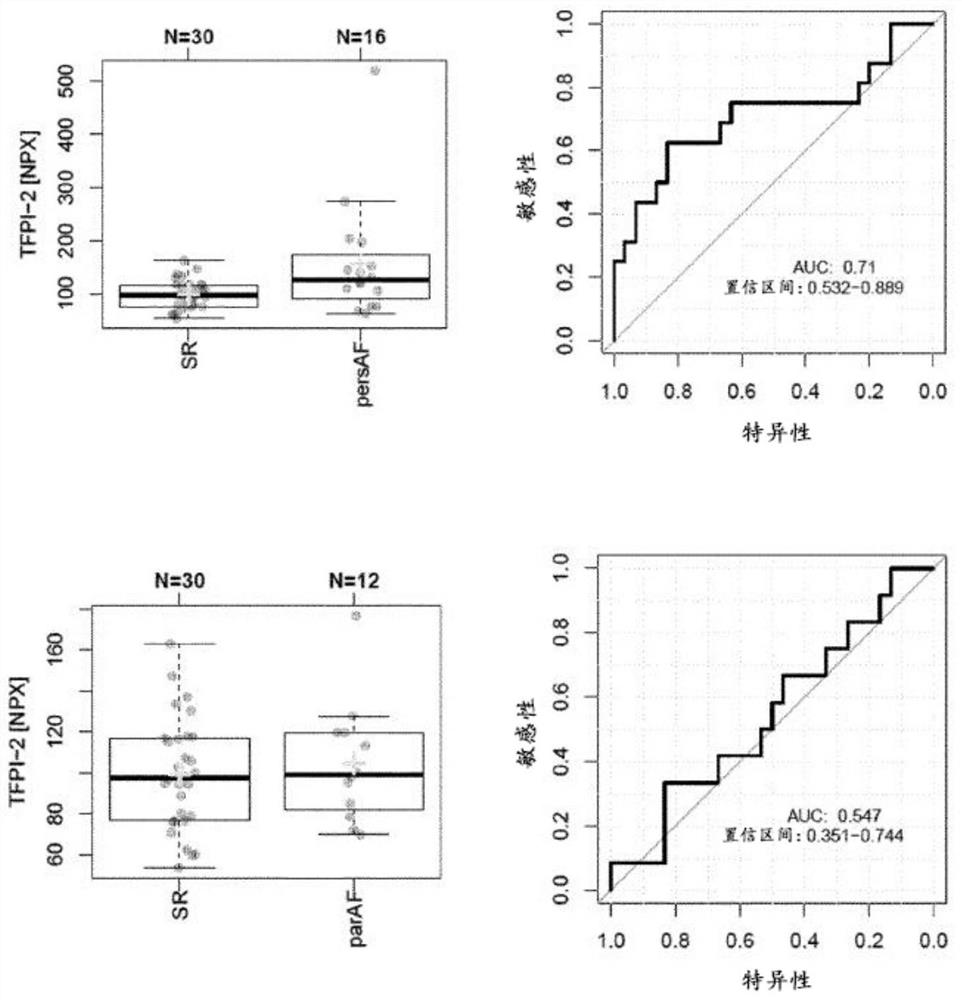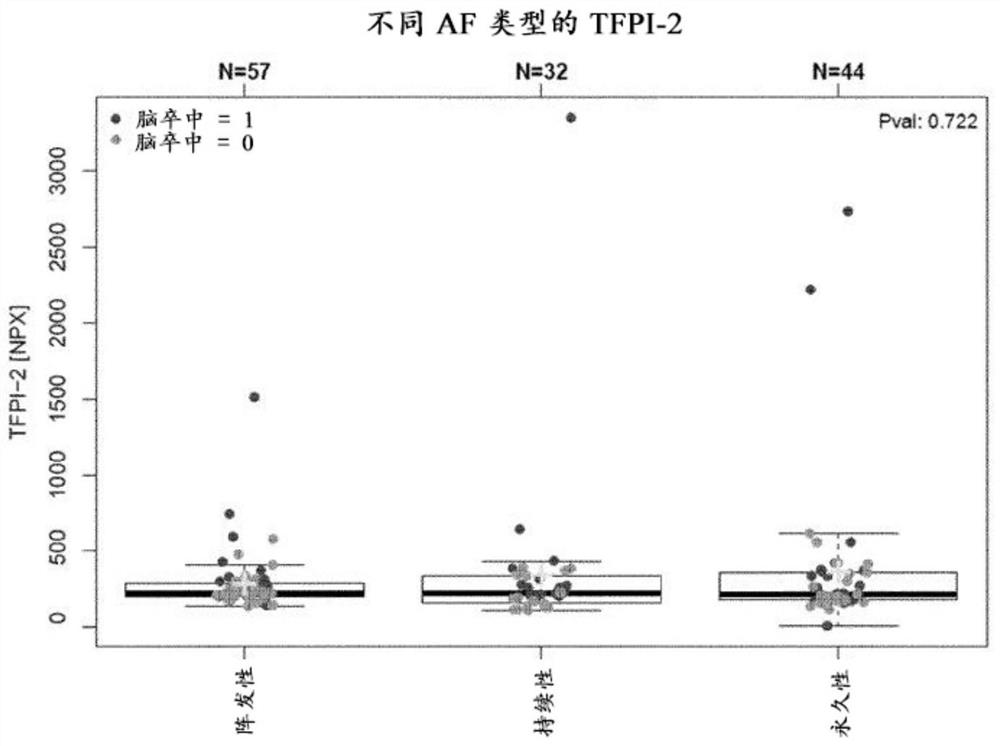Application of circulating tfpi-2 (tissue factor pathway inhibitor 2) in the assessment of atrial fibrillation and anticoagulation therapy
A TFPI-2, atrial fibrillation technology, used in disease diagnosis, instrumentation, biomaterial analysis, etc., can solve problems such as cessation
- Summary
- Abstract
- Description
- Claims
- Application Information
AI Technical Summary
Problems solved by technology
Method used
Image
Examples
example 1
[0395] Example 1: Differential expression of TFPI-2 in cardiac tissues of AF patients
[0396] Differential TFPI-2 expression levels have been determined in myocardial tissue samples from the right atrial appendage of n=38 patients.
[0397] RNAseq analysis
[0398] Atrial tissue was sampled during open thoracotomy due to CABG or valve surgery. Evidence of AF or SR (control) was generated by simultaneous endocardial-epicardial hyperintensity activation mapping during surgery. AF patients and controls were matched for sex, age, and comorbidities.
[0399] Atrial tissue samples are prepared for
[0400] AF patients; n=9 patients
[0401] • Control patients in SR; n=29 patients.
[0402] Differential expression of TFPI-2 was determined in RNAseq analysis using algorithms RSEM and DESeq2.
[0403] like figure 1 As shown, TFPI-2 expression was found to be upregulated in the atrial tissues of the 9 paroxysmal AF patients analyzed compared with 29 control patients.
[0404] T...
example 2
[0407] Example 2: Assessment of AF with cyclic TFPI-2
[0408] The MAPPING study involved patients undergoing thoracotomy. Samples were obtained prior to anesthesia and surgery. Patients were electrophysiologically characterized using high-density epicardial mapping (high-density mapping) with a multielectrode array.
[0409] Circulating TFPI-2 levels have been determined in 12 patients with paroxysmal atrial fibrillation, 16 patients with persistent atrial fibrillation, and 30 control patients for optimal (age, sex, comorbidities) matching. TFPI-2 was determined in samples from the MAPPING study.
[0410] Measurements were performed in 30 patients in sinus rhythm (SR), 12 patients with paroxysmal atrial fibrillation (parAF) and 16 patients with persistent atrial fibrillation (persAF).
[0411] Figure 2a showed that compared with SR patients, TFPI-2 was significantly elevated in persAF patients (AUC0.71). Therefore, TFPI-2 can be used to diagnose persAF. Elevated TFPI-2...
example 3
[0415] Example 3: Prediction of stroke
[0416] Analytical method
[0417] The ability of circulating TFPI-2 to predict the risk of stroke was assessed in a prospective multicenter registry of patients with documented atrial fibrillation (Conen D., Forum Med Suisse 2012; 12:860-862). TFPI-2 was measured using a stratified case cohort design as described by Borgan (2000).
[0418] For each of the 70 patients who experienced a stroke ("event") during follow-up, 1 matched control patient was selected. Control patients were matched on the basis of demographic and clinical information on age, sex, history of hypertension, type of atrial fibrillation, and history of heart failure (CHF history).
[0419] TFPI-2, NTproBNP, ESM-1, Ang-2, IGFBP-7 results were available for 67 event-experienced patients and 66 event-naive patients.
[0420] TFPI-2 was measured using the Olink platform, therefore no absolute concentration values are available and can be reported. Results will be rep...
PUM
 Login to View More
Login to View More Abstract
Description
Claims
Application Information
 Login to View More
Login to View More - R&D
- Intellectual Property
- Life Sciences
- Materials
- Tech Scout
- Unparalleled Data Quality
- Higher Quality Content
- 60% Fewer Hallucinations
Browse by: Latest US Patents, China's latest patents, Technical Efficacy Thesaurus, Application Domain, Technology Topic, Popular Technical Reports.
© 2025 PatSnap. All rights reserved.Legal|Privacy policy|Modern Slavery Act Transparency Statement|Sitemap|About US| Contact US: help@patsnap.com



